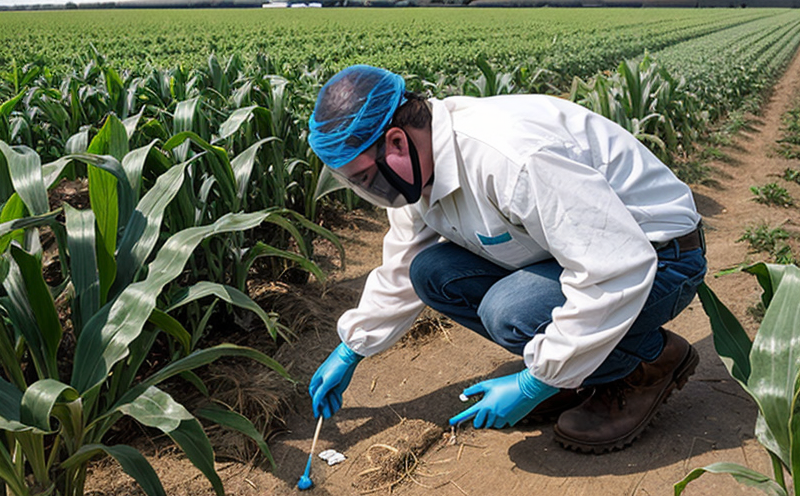Pyraclostrobin Residue Testing in Crops
Pyraclostrobin is a fungicide used to control diseases such as Alternaria leaf spot and anthracnose. This section provides an in-depth look at the testing procedure for pyraclostrobin residues in crops, including specimen preparation, analytical methods, and acceptance criteria.
Quality managers and compliance officers need accurate residue testing results to ensure that their products comply with international standards such as ISO 3629-1 for fungicides. This service is critical in the agricultural sector, where ensuring crop safety and quality is paramount.
The testing process involves several stages: sample collection, extraction, purification, and analysis. Samples are collected from various parts of the crops to ensure a representative mix that reflects potential residue levels. Extraction methods vary depending on the type of crop but often include solvent-based techniques such as aqueous two-phase systems or solid-phase microextraction (SPME).
Once extracted, residues are purified using chromatographic techniques like high-performance liquid chromatography (HPLC) with ultraviolet detection. The purity and concentration of pyraclostrobin are then determined through calibration curves derived from spiked standards.
The acceptance criteria for this test are stringent, aligning with ISO 3629-1 guidelines. Residues must not exceed the maximum residue limits (MRLs) set by international bodies such as Codex Alimentarius Commission and the European Food Safety Authority (EFSA).
In summary, accurate pyraclostrobin residue testing ensures food safety and compliance with regulatory standards. This service is essential for maintaining the integrity of agricultural products in both domestic and export markets.
Industry Applications
| Crop Type | Pesticide Residue Testing Frequency | Testing Methodology |
|---|---|---|
| Grains (wheat, barley) | At least twice a growing season | HPLC with UV detection |
| Fruits and Vegetables | Quarterly throughout the harvest period | Gas Chromatography-Mass Spectrometry (GC-MS) |
| Trees and Shrubs | Twice a year | HPLC with UV detection |
The table above provides an overview of the testing frequency for different crops, as well as the methodologies typically employed. The choice of method depends on the crop type and the sensitivity required for detecting pyraclostrobin residues.
Why Choose This Test
The importance of residue testing cannot be overstated in the agricultural sector, especially when dealing with fungicides like pyraclostrobin. Proper residue testing ensures that crops meet regulatory standards and are safe for consumption. Compliance officers rely on accurate data to avoid legal issues related to non-compliance.
R&D engineers also benefit from this service as they can monitor the effectiveness of fungicide usage over time, leading to more precise application techniques. This helps in minimizing unnecessary pesticide use while maintaining crop health and productivity.
For quality managers, ensuring that pyraclostrobin residues fall within acceptable limits is crucial for brand reputation and consumer trust. They also need accurate data to make informed decisions regarding storage and transport conditions of their products.
The testing service contributes significantly to the sustainability efforts in agriculture by promoting responsible pesticide use. It helps reduce environmental impact, protects biodiversity, and ensures that agricultural practices are sustainable over the long term.
Environmental and Sustainability Contributions
Pyraclostrobin residue testing supports environmental protection by ensuring that crops do not contain harmful levels of pesticides. This reduces the risk of contamination in soil, water, and air, which can have adverse effects on ecosystems and human health.
By adhering to strict residue limits set by international standards, agricultural producers contribute positively to sustainable farming practices. Reduced pesticide use leads to healthier soils and reduced runoff into water bodies, thereby protecting aquatic life.
The service also aids in the development of more efficient pest management strategies. With accurate data on residue levels, farmers can optimize their application methods, leading to a more sustainable and economically viable agricultural sector.





